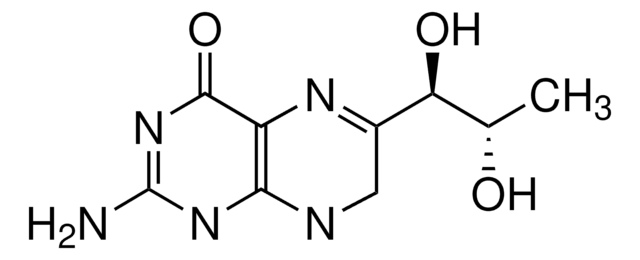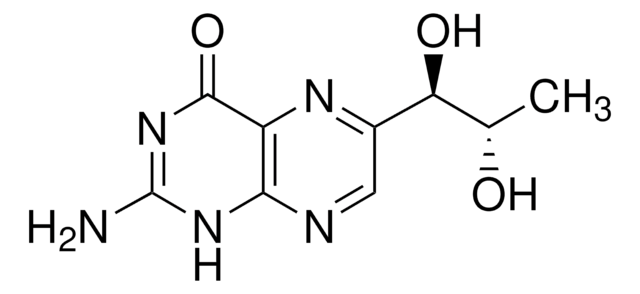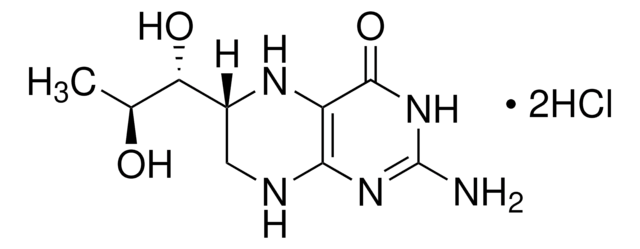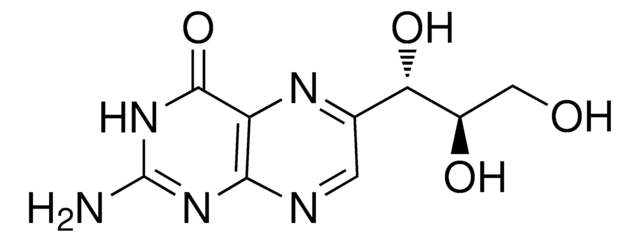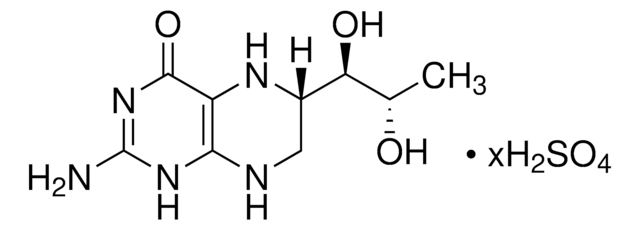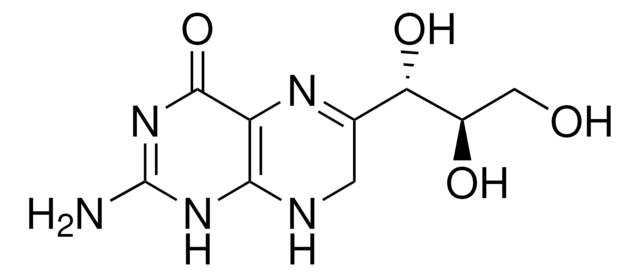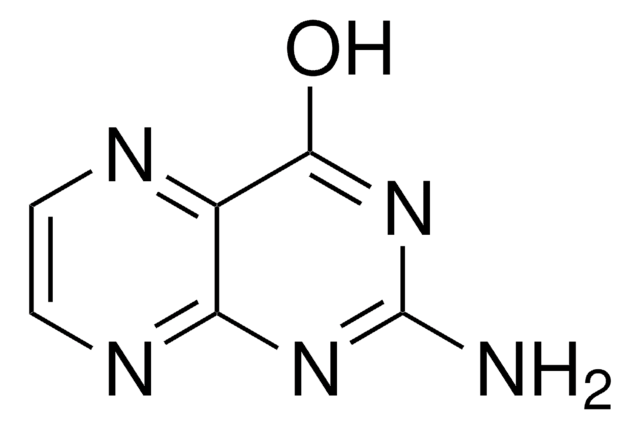S154
Sepiapterin
solid
Synonyme(s) :
S-(−)-2-Amino-7,8-dihydro-6-(2-hydroxy-1-oxopropyl)-4(1H)-pteridinone, L-Sepiapterin
About This Item
Produits recommandés
Forme
solid
Couleur
yellow
Solubilité
DMSO: 27 mg/mL
0.1 M NaOH: 9.8 mg/mL
εmax
6170 at 409 nm in 0.1 M HCl
7410 at 271 nm in 0.1 M HCl at 1%
Température de stockage
−20°C
Chaîne SMILES
C[C@H](O)C(=O)C1=NC2=C(NC1)NC(N)=NC2=O
InChI
1S/C9H11N5O3/c1-3(15)6(16)4-2-11-7-5(12-4)8(17)14-9(10)13-7/h3,15H,2H2,1H3,(H4,10,11,13,14,17)/t3-/m0/s1
Clé InChI
VPVOXUSPXFPWBN-VKHMYHEASA-N
Informations sur le gène
human ... NOS1(4842) , NOS2(4843) , NOS2B(201288) , NOS2C(645740) , NOS3(4846)
Description générale
Application
Actions biochimiques/physiologiques
Code de la classe de stockage
13 - Non Combustible Solids
Classe de danger pour l'eau (WGK)
WGK 3
Point d'éclair (°F)
Not applicable
Point d'éclair (°C)
Not applicable
Équipement de protection individuelle
Eyeshields, Gloves, type N95 (US)
Faites votre choix parmi les versions les plus récentes :
Déjà en possession de ce produit ?
Retrouvez la documentation relative aux produits que vous avez récemment achetés dans la Bibliothèque de documents.
Notre équipe de scientifiques dispose d'une expérience dans tous les secteurs de la recherche, notamment en sciences de la vie, science des matériaux, synthèse chimique, chromatographie, analyse et dans de nombreux autres domaines..
Contacter notre Service technique